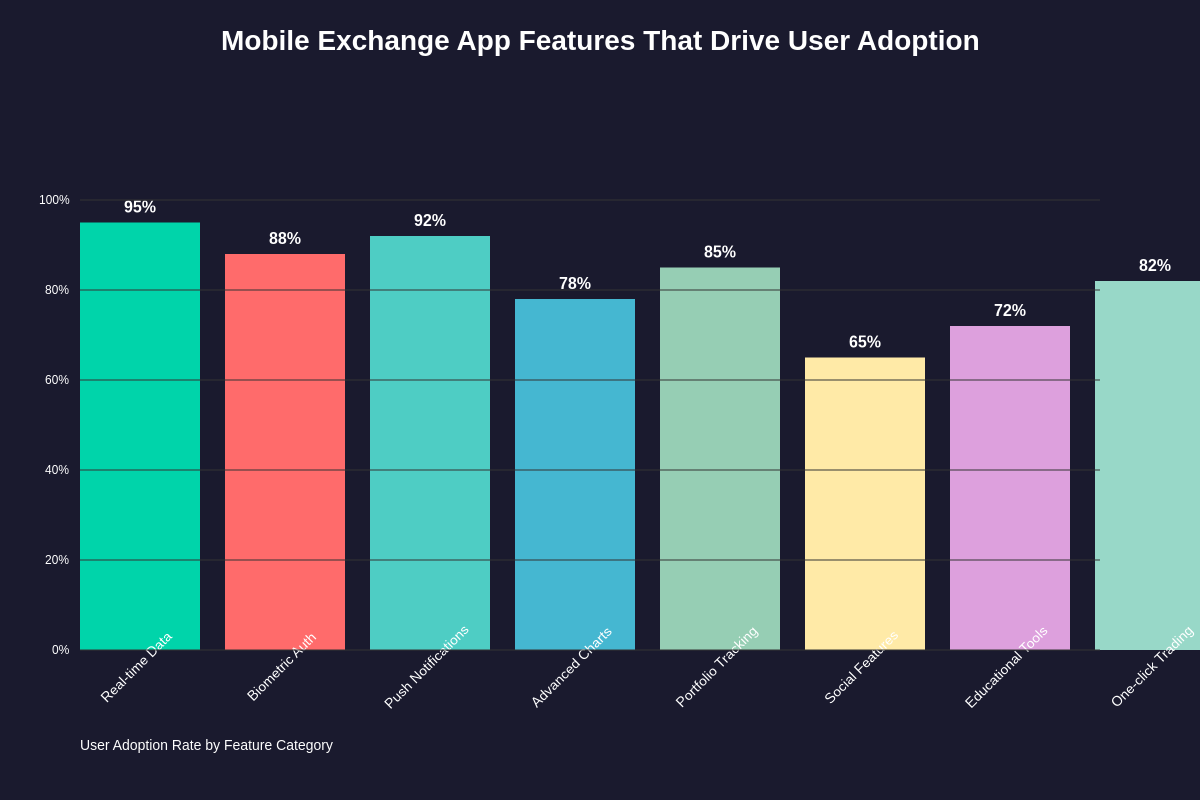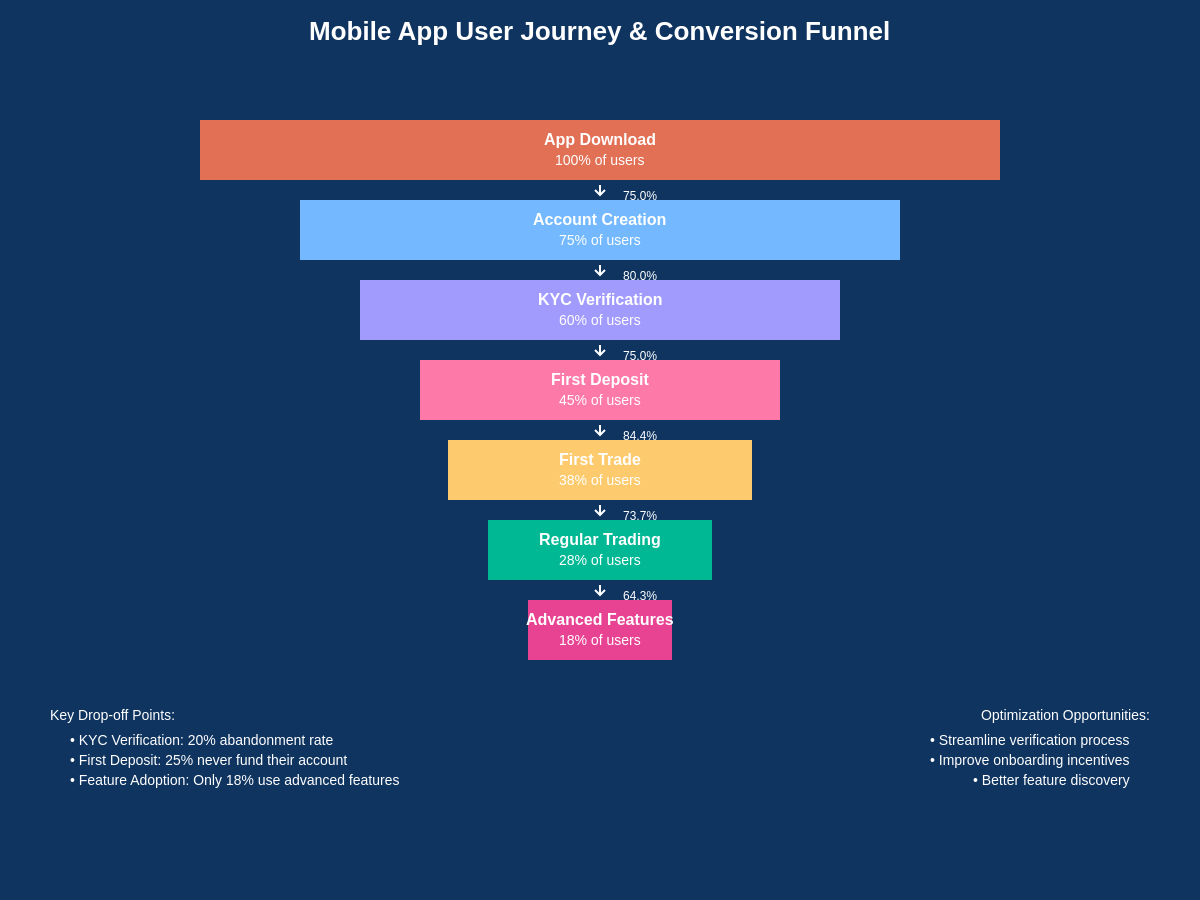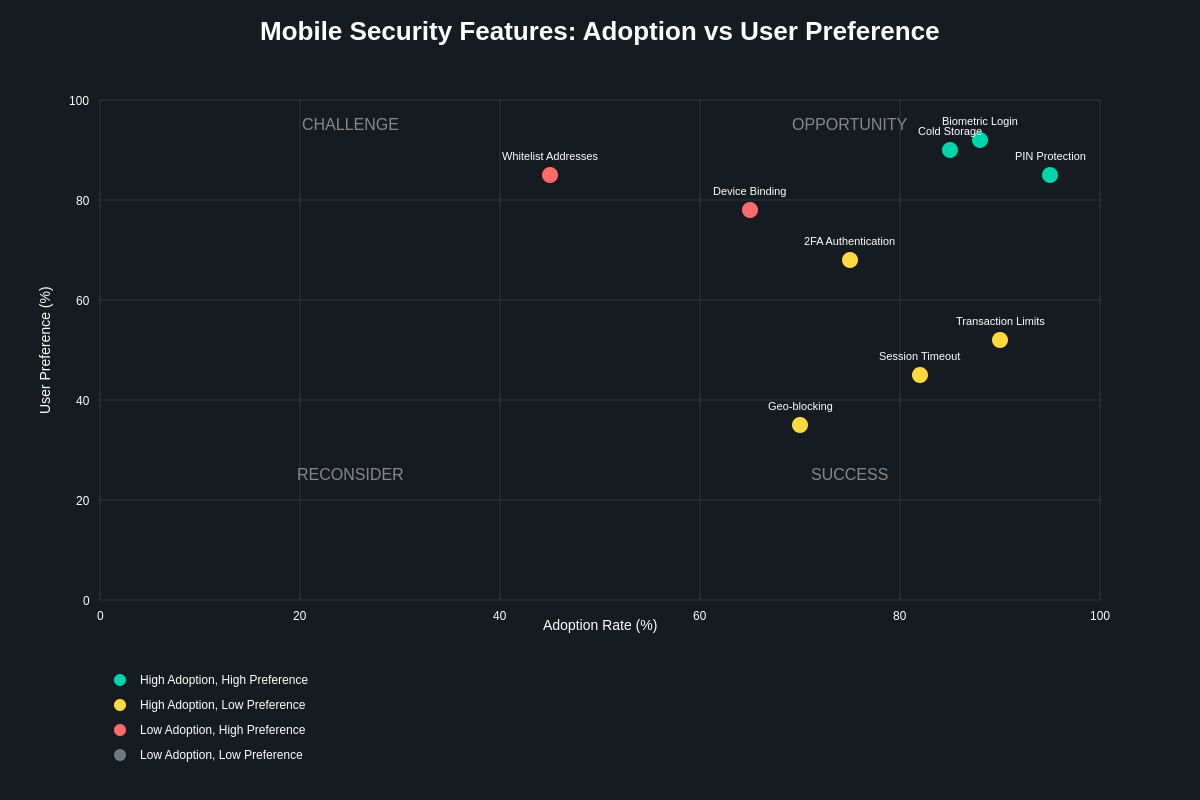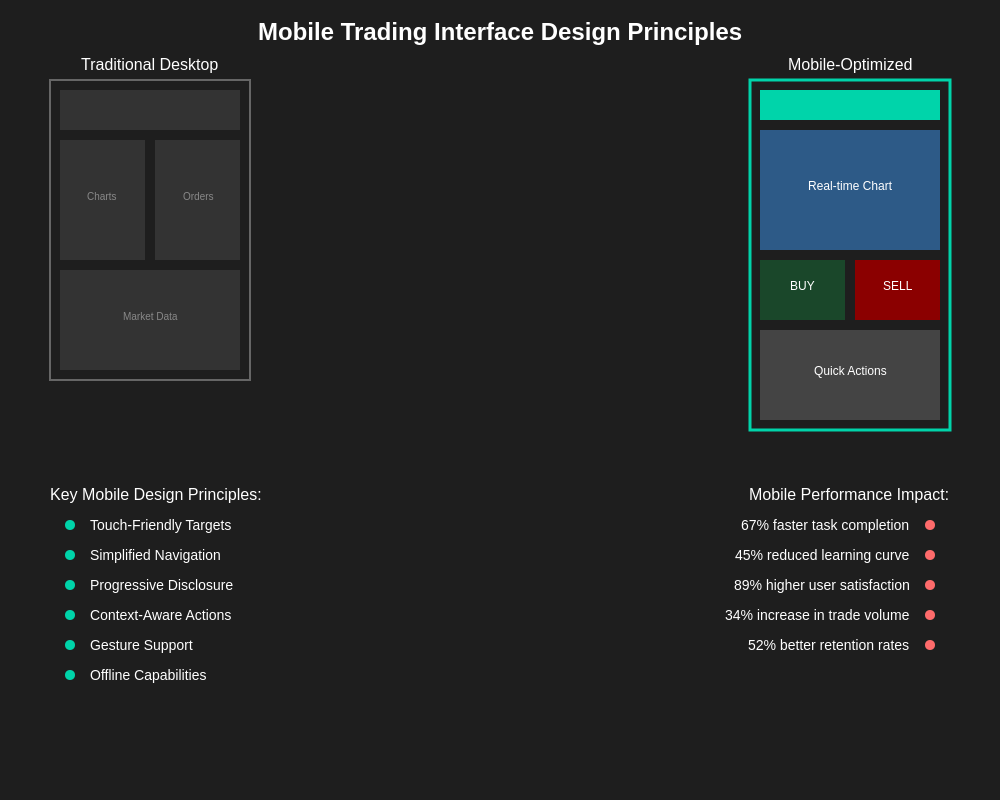The Mobile-First Revolution in Cryptocurrency Trading
The cryptocurrency exchange landscape has undergone a dramatic transformation as mobile applications have emerged as the primary interface through which millions of users interact with digital asset markets. TradingView’s mobile platform exemplifies this shift, offering sophisticated charting and analysis tools that rival desktop platforms while maintaining intuitive mobile-native design patterns that appeal to both novice and professional traders.
Modern cryptocurrency exchanges have recognized that mobile-first design is no longer optional but essential for user acquisition and retention in an increasingly competitive market. The most successful exchanges have invested heavily in creating mobile experiences that not only match but often exceed the functionality of their desktop counterparts, understanding that today’s traders demand seamless access to markets regardless of their location or device preferences.
The evolution from desktop-centric trading platforms to mobile-first applications represents more than just a technological shift; it reflects a fundamental change in how users conceptualize and interact with financial markets. Mobile apps have democratized access to sophisticated trading tools and real-time market data that were once available only to institutional traders, enabling a new generation of retail investors to participate in cryptocurrency markets with unprecedented ease and sophistication.
User Interface Design and Navigation Excellence
The foundation of successful mobile exchange applications lies in their ability to present complex financial information and trading interfaces in formats that are both accessible to newcomers and powerful enough for experienced traders. Leading exchanges have developed sophisticated design systems that prioritize clarity, speed, and intuitive navigation while accommodating the diverse needs of their user bases across different experience levels and trading styles.

Effective mobile interface design for cryptocurrency exchanges requires careful consideration of information hierarchy, ensuring that critical data such as current prices, portfolio balances, and market movements are immediately visible without overwhelming users with excessive detail. The most successful applications employ progressive disclosure techniques that allow users to access increasingly detailed information through logical navigation paths that feel natural and predictable.
Color psychology plays a crucial role in mobile exchange design, with successful applications using consistent color coding to communicate market movements, transaction types, and system status in ways that users can quickly internalize and understand. Red and green color schemes for price movements have become standardized across the industry, but leading exchanges differentiate themselves through thoughtful use of accent colors, typography, and visual hierarchy that creates distinctive brand experiences while maintaining familiar conventions.
Touch interface optimization represents another critical aspect of mobile exchange design, with successful applications implementing gesture-based navigation, appropriately sized touch targets, and haptic feedback systems that make complex trading operations feel intuitive and responsive. The challenge lies in translating desktop trading workflows that rely heavily on keyboard shortcuts and multiple monitor setups into mobile interfaces that feel natural and efficient on smaller screens.
Real-Time Data and Push Notifications
The competitive advantage of modern mobile exchange applications often hinges on their ability to deliver real-time market data and intelligent notifications that keep users informed about relevant market movements without overwhelming them with noise. Advanced notification systems have evolved beyond simple price alerts to include sophisticated features such as technical indicator triggers, volume anomaly detection, and personalized news feeds that adapt to individual user interests and trading patterns.
Smart notification algorithms analyze user behavior patterns, trading history, and portfolio composition to deliver highly relevant alerts that help users identify trading opportunities and manage risk effectively. These systems must balance the need for timely information delivery with user experience considerations, ensuring that notifications provide genuine value rather than becoming sources of distraction or notification fatigue.
Real-time data streaming capabilities have become table stakes for competitive mobile exchange applications, with users expecting instant updates for price movements, order book changes, and trade executions across multiple cryptocurrency pairs simultaneously. The technical challenges of maintaining reliable real-time data connections across diverse mobile network conditions while minimizing battery consumption require sophisticated optimization strategies that separate leading applications from their competitors.
Push notification personalization features allow users to customize their alert preferences based on their individual trading strategies, risk tolerance levels, and time zone considerations. Advanced applications offer granular control over notification timing, frequency, and content, enabling users to create notification profiles that align with their specific trading approaches whether they focus on day trading, swing trading, or long-term investment strategies.
Advanced Charting and Technical Analysis Tools
Mobile charting capabilities have evolved dramatically from simple line graphs to sophisticated technical analysis platforms that rival traditional desktop applications in both functionality and usability. Leading exchange applications now offer comprehensive charting tools that include multiple timeframes, dozens of technical indicators, drawing tools, and pattern recognition features that enable detailed market analysis directly from mobile devices.

The integration of TradingView’s advanced charting platform into mobile exchange applications has set new standards for mobile technical analysis capabilities, providing users with professional-grade tools for market analysis, strategy development, and trade execution planning. These integrated solutions demonstrate how successful mobile applications can leverage specialized platforms to offer capabilities that would be prohibitively expensive to develop independently.
Customizable chart layouts and indicator combinations allow users to create personalized analysis environments that match their specific trading methodologies and analytical preferences. Advanced applications offer the ability to save multiple chart configurations, sync settings across devices, and share analysis with other users, creating collaborative trading environments that extend beyond individual user experiences.
Mobile-optimized drawing tools and annotation features enable traders to perform detailed technical analysis including trend line drawing, support and resistance level identification, and chart pattern markup directly on their mobile devices. The challenge lies in creating touch-friendly interfaces for precise drawing operations while maintaining the accuracy and functionality that serious technical analysts require.
Portfolio Management and Performance Tracking
Comprehensive portfolio management capabilities have become essential features that distinguish premium mobile exchange applications from basic trading platforms. Users expect sophisticated tools for tracking their holdings across multiple cryptocurrencies, monitoring performance metrics, analyzing historical returns, and understanding the composition and risk characteristics of their portfolios in real-time.
Advanced portfolio analytics include features such as profit and loss calculations, asset allocation visualization, correlation analysis, and risk metrics that help users make informed decisions about their investment strategies. These tools must present complex financial data in formats that are accessible to users with varying levels of financial sophistication while providing the depth of analysis that experienced investors require.
Cross-exchange portfolio aggregation represents a significant value proposition for users who maintain accounts across multiple platforms, enabling them to view their complete cryptocurrency holdings in a single interface regardless of where their assets are stored. This functionality requires sophisticated API integrations and data synchronization capabilities that must maintain accuracy and security while providing seamless user experiences.
Tax reporting and transaction history features have become increasingly important as cryptocurrency adoption has grown and regulatory requirements have become more complex. Leading applications offer comprehensive transaction tracking, cost basis calculations, and tax reporting tools that help users maintain compliance with evolving cryptocurrency tax regulations across different jurisdictions.
Security Features and Biometric Authentication
Mobile security implementations for cryptocurrency exchange applications must address unique challenges related to device security, network connectivity, and user authentication while maintaining the convenience and accessibility that users expect from mobile applications. The most successful applications employ multi-layered security approaches that combine device-level security features with application-specific protections and server-side security measures.

Biometric authentication systems have become standard features that provide both enhanced security and improved user experience by enabling quick and secure access to trading accounts without requiring complex password entry on mobile keyboards. Fingerprint recognition, facial recognition, and voice authentication options give users flexibility in choosing authentication methods that match their preferences and device capabilities.
Advanced security features include transaction signing with hardware security modules, time-based access restrictions, geographic location monitoring, and behavioral analysis systems that can detect unusual account activity patterns. These features must be implemented in ways that provide robust protection without creating friction that discourages regular application usage or emergency access during volatile market conditions.
Two-factor authentication integration with mobile applications requires careful balance between security requirements and user experience considerations, with successful implementations offering multiple 2FA options including SMS, authenticator applications, and hardware tokens while providing clear guidance on security best practices and recovery procedures for users who lose access to their authentication devices.
Social Trading and Community Features
Social trading features have emerged as powerful tools for user engagement and retention, enabling users to follow successful traders, copy trading strategies, and participate in community discussions about market trends and investment opportunities. These features transform mobile exchange applications from simple trading tools into comprehensive platforms that combine financial services with social networking capabilities.
Advanced social features include trader ranking systems, performance verification mechanisms, and transparent statistics that help users identify and follow traders whose strategies align with their risk tolerance and investment objectives. The challenge lies in creating systems that provide meaningful social interaction while maintaining user privacy and preventing manipulation of social signals for fraudulent purposes.
Community-driven content features such as market sentiment indicators, user-generated analysis, and collaborative research tools create value propositions that extend beyond basic trading functionality. These features can help exchanges build loyal user communities while providing valuable market intelligence that benefits all platform participants.
Copy trading functionality enables less experienced users to automatically replicate the trades of successful traders, creating new revenue opportunities for skilled traders while providing learning opportunities for novices. Implementation of these features requires sophisticated risk management systems, transparent fee structures, and clear disclosure of risks associated with automated trading strategies.
Educational Resources and Learning Tools
Comprehensive educational resources have become critical differentiators for mobile exchange applications, particularly as cryptocurrency adoption has expanded beyond early adopters to include mainstream users who require significant educational support to navigate digital asset markets safely and effectively. Leading applications offer structured learning programs that guide users through progressively complex topics from basic cryptocurrency concepts to advanced trading strategies.
Interactive tutorials and guided trading experiences help new users understand platform functionality while reducing the risk of costly mistakes during their initial trading experiences. These features must balance educational value with practical application, providing users with opportunities to practice trading concepts in safe environments before risking real capital in live markets.
Educational content integration includes features such as embedded articles, video tutorials, webinars, and expert analysis that help users stay informed about market developments and improve their trading knowledge over time. The most effective implementations curate content based on user experience levels and interests, creating personalized learning experiences that evolve with user development.
Gamification elements in educational features can increase user engagement with learning materials while making complex financial concepts more accessible and enjoyable to learn. Successful implementations include achievement systems, progress tracking, and reward mechanisms that encourage continued learning and skill development without trivializing the serious nature of financial education.
Trading Features and Order Types
Advanced trading functionality represents the core value proposition of mobile exchange applications, with successful platforms offering comprehensive order types, execution options, and trading tools that enable users to implement sophisticated trading strategies directly from their mobile devices. The challenge lies in presenting complex trading features in mobile interfaces that remain intuitive and accessible to users with varying levels of trading experience.

Professional-grade order types including limit orders, stop-loss orders, market orders, and advanced conditional orders must be implemented with clear user interfaces that prevent costly execution errors while providing the precision and control that serious traders require. Successful applications offer order preview features, confirmation dialogues, and execution feedback that help users understand exactly what will happen when they place trades.
Advanced trading features such as margin trading, futures contracts, and options trading require sophisticated risk management systems and educational resources to ensure that users understand the risks and mechanics of leveraged trading products. These features must be implemented with appropriate safeguards and disclosure requirements while maintaining the accessibility that mobile users expect.
One-click trading features and preset order templates can significantly improve trading efficiency for experienced users while maintaining safety measures that prevent accidental executions. The implementation of these features requires careful balance between speed and security, with successful applications offering customizable risk parameters and confirmation requirements based on trade size and complexity.
Performance Optimization and Speed
Mobile application performance optimization directly impacts user satisfaction and trading success, with slow loading times or delayed data updates potentially costing users money in fast-moving cryptocurrency markets. Leading exchange applications invest heavily in performance optimization strategies that ensure reliable operation across diverse mobile devices and network conditions.
Caching strategies and offline functionality enable continued access to critical information and basic application features even during network connectivity issues, while synchronization systems ensure that users always have access to current account information and market data when connectivity is restored. These features are particularly important for users in regions with unreliable internet infrastructure or those who travel frequently.
Battery optimization measures help extend device usage time during extended trading sessions, with successful applications implementing power management features that reduce CPU usage, minimize background activity, and optimize network communications. These optimizations must balance performance requirements with battery conservation to ensure that users can maintain access to trading platforms throughout critical market periods.
Load balancing and redundancy systems ensure that mobile applications remain responsive during periods of high market volatility when trading activity typically increases dramatically. The infrastructure requirements for maintaining performance during these peak periods represent significant technical and financial investments that separate professional-grade platforms from basic trading applications.
Cross-Platform Synchronization and Cloud Integration
Seamless synchronization across mobile devices, tablets, and desktop platforms has become an essential feature that enables users to maintain consistent trading experiences regardless of their chosen device or location. Advanced synchronization systems must maintain real-time consistency of account information, trading preferences, chart configurations, and watchlists across all connected devices while ensuring data security and privacy.
Cloud-based backup and recovery systems protect users against data loss due to device failure, theft, or accidental deletion while enabling easy migration to new devices without losing personalized settings and trading history. These systems must implement robust encryption and access controls to protect sensitive financial information while providing convenient recovery options for legitimate users.
Cross-device notification management allows users to customize how alerts and updates are delivered across their various devices, preventing notification spam while ensuring that critical information reaches users through their preferred communication channels. Advanced implementations offer intelligent routing that considers user location, time zones, and device availability when delivering time-sensitive notifications.
Universal search functionality that works consistently across all platform versions enables users to quickly locate specific cryptocurrencies, trading pairs, or account information regardless of their current device. The implementation of these features requires sophisticated indexing and search algorithms that can handle the complex data structures typical of cryptocurrency trading platforms.
Payment Integration and Fiat On-Ramps
Seamless payment integration capabilities have become critical features that determine user adoption rates, particularly among mainstream users who expect familiar payment experiences when purchasing their first cryptocurrencies. Leading mobile exchange applications offer multiple payment options including credit cards, bank transfers, digital wallets, and alternative payment methods that accommodate users across different geographic regions and banking preferences.
Fiat on-ramp optimization focuses on reducing friction in the cryptocurrency purchase process through streamlined identity verification, automated payment processing, and clear fee disclosure that helps users understand the total costs of their transactions. The most successful implementations balance regulatory compliance requirements with user experience considerations to create purchase flows that feel familiar and trustworthy to traditional financial service users.
Integration with popular payment platforms such as Apple Pay, Google Pay, and PayPal provides users with familiar payment experiences while leveraging existing security and fraud prevention systems. These integrations must maintain compliance with both cryptocurrency regulations and traditional payment industry standards while providing seamless user experiences that minimize transaction abandonment rates.
International payment support and multi-currency functionality enable global user bases to access cryptocurrency markets using their preferred local payment methods and currencies. The implementation of these features requires extensive partnerships with payment processors, compliance with multiple regulatory frameworks, and sophisticated currency conversion systems that provide transparent pricing for international users.
Customer Support and Help Systems
Comprehensive customer support integration within mobile applications has become essential for user retention and satisfaction, particularly given the complexity of cryptocurrency trading and the high stakes involved in financial transactions. Leading exchange applications offer multiple support channels including live chat, ticket systems, knowledge bases, and community forums that are accessible directly within their mobile interfaces.
AI-powered chatbots and automated support systems provide immediate assistance for common questions and issues while escalating complex problems to human support representatives when necessary. These systems must be sophisticated enough to handle the technical complexity of cryptocurrency trading questions while maintaining the conversational quality that users expect from customer service interactions.
Contextual help systems provide relevant assistance and guidance based on user location within the application and their current activity, reducing the need for users to search through extensive documentation or contact support for basic operational questions. These systems must be regularly updated to reflect application changes and new feature additions while maintaining accuracy and relevance.
Video calling and screen sharing capabilities for complex support issues enable support representatives to provide personalized assistance with trading problems, account access issues, and technical difficulties that are difficult to resolve through text-based communication alone. The implementation of these features requires significant infrastructure investment and training programs for support staff but can dramatically improve resolution rates for complex issues.
Regulatory Compliance and KYC Integration
Regulatory compliance features must be seamlessly integrated into mobile user experiences without creating excessive friction that discourages user adoption or creates barriers to account access. Leading exchange applications implement streamlined Know Your Customer (KYC) processes that leverage mobile device capabilities such as document cameras, facial recognition, and geolocation services to create efficient verification workflows.
Automated compliance monitoring systems track user activities and transaction patterns to ensure ongoing compliance with regulatory requirements while flagging unusual activities that may require additional verification or investigation. These systems must balance compliance obligations with user privacy considerations while maintaining the transparency that builds user trust and confidence.
Geographic restriction systems and IP-based access controls ensure that applications comply with varying regulatory requirements across different jurisdictions while providing clear information to users about service availability and limitations. The implementation of these features requires sophisticated geolocation services and regular updates to reflect changing regulatory landscapes.
Tax reporting assistance and transaction categorization features help users maintain compliance with cryptocurrency tax obligations while providing the documentation and reporting tools that accountants and tax professionals require. These features must accommodate varying tax regulations across different jurisdictions while providing clear guidance on record-keeping requirements and reporting obligations.
Integration with DeFi and Web3 Services
Direct integration with decentralized finance protocols and Web3 services has become an increasingly important feature that enables users to access yield farming opportunities, liquidity mining programs, and decentralized trading options directly from their mobile exchange applications. These integrations must balance the accessibility benefits of centralized interfaces with the decentralized principles and technical requirements of DeFi protocols.
Wallet Connect integration and direct blockchain interaction capabilities enable users to participate in DeFi activities while maintaining custody of their assets, providing alternatives to traditional centralized exchange services for users who prefer decentralized financial products. The implementation of these features requires sophisticated blockchain integration and user education programs to ensure safe and effective usage.
Non-fungible token (NFT) marketplace integration and digital collectibles support expand exchange applications beyond traditional cryptocurrency trading to include emerging digital asset categories that appeal to broader user bases. These features must accommodate the unique characteristics and valuation challenges associated with NFTs while providing familiar trading interfaces for users accustomed to traditional cryptocurrency markets.
Cross-chain functionality and multi-blockchain support enable users to access opportunities across different blockchain networks without requiring separate applications or complex technical setup procedures. The implementation of these features requires extensive blockchain expertise and ongoing maintenance to accommodate the rapidly evolving landscape of blockchain technologies and protocols.
Future Trends and Emerging Technologies
Artificial intelligence and machine learning integration represent the next frontier in mobile exchange application development, with emerging applications offering personalized trading recommendations, automated market analysis, and intelligent risk management tools that adapt to individual user preferences and market conditions. These technologies promise to democratize access to sophisticated trading strategies while providing new levels of personalization and automation.
Augmented reality and virtual reality integration may transform how users interact with market data and trading interfaces, enabling immersive data visualization experiences and collaborative trading environments that extend beyond traditional screen-based interactions. Early experiments in this area suggest significant potential for enhanced user engagement and improved understanding of complex market dynamics.
Voice-activated trading and conversational interfaces could revolutionize mobile trading accessibility, enabling hands-free market access and trade execution through natural language commands. The development of these features requires sophisticated natural language processing capabilities and robust security measures to prevent unauthorized access and accidental trades.
Blockchain-native mobile applications that operate entirely on decentralized infrastructure represent a potential paradigm shift that could eliminate traditional centralized exchange dependencies while providing familiar mobile user experiences. The development of these applications requires advances in blockchain scalability, user interface design, and cross-chain interoperability that are currently in early stages of development.
The evolution of mobile exchange applications continues to accelerate as traditional trading platforms adapt to meet the demands of increasingly sophisticated mobile users while new technologies create opportunities for innovative trading experiences that were previously impossible on mobile devices.
Disclaimer: This content is for informational purposes only and should not be considered financial advice. Cryptocurrency trading involves significant risks, and you should carefully consider your investment objectives and risk tolerance before engaging in any trading activities. Always conduct your own research and consult with qualified financial advisors before making investment decisions.